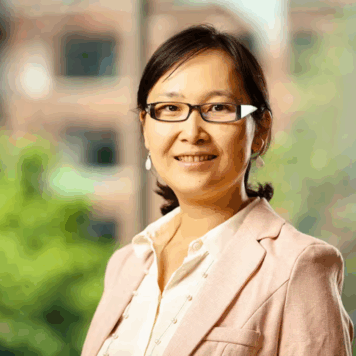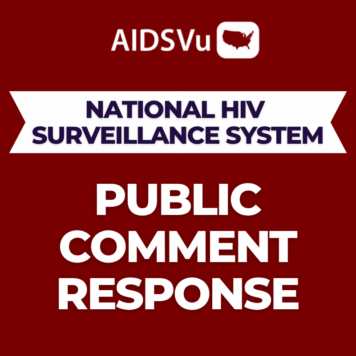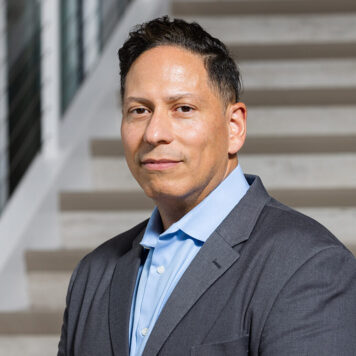Robin Lin Miller is a Professor in the Department of Psychology at Michigan State University. Miller’s research program focuses on community-based HIV prevention services and access to HIV care, particularly among adolescent and young adult Black sexual minority males. In 2021, Miller published research entitled “Breaking Down Barriers to HIV Care for Gay and Bisexual Men and Transgender Women: The Advocacy and Other Community Tactics (ACT) Project,” and is currently working on publishing a book on the ACT Project.
Q: In your research, a lot of your interest lies in racial and homophobic structural stigma, as well as the effects of this stigma on access to HIV services for men who have sex with men (MSM). What spurred your interest in this research topic, and how have you seen HIV-related stigma evolve over time?
The origins of my interest in this topic come first and foremost from my own personal background. Despite being very light skinned, my late mother is African American. From very early in my childhood, I was well aware of the kinds of experiences that the generations before me have had. I was conscious of the ways in which their lives were shaped and restricted – especially the experiences that were unavailable to them because of structural factors.
My parents and I spent all of the summers of my childhood on Fire Island Pines. I grew up there more than any place else. It was the most consistent, enduring setting in which I lived as a child and adolescent. I lived there at the beginning of the AIDS epidemic and was aware of the safe place that Fire Island provided to gay men. When they returned home from Fire Island, there was a heaviness that went with them. They faced stigma and discrimination in the city, and in their workplaces. A number of them hid who they were in work settings, and they carried a heavy burden for that — they could not be themselves. When people started to become sick with HIV, I was in this setting where this tiny community of people were just overwhelmed with death. Men I’d known since I was a little girl would come into the summer in the beginning of the season looking healthy, and they’d be dead by the end of the summer. And I watched that transformation, that rapid deterioration. I had friends whose parents would not acknowledge what their child had died of. They wouldn’t come see them in intensive care, and families would make such big efforts to hide who their children were and what caused their premature deaths. Those were very early influences on what drove my interests and continue to drive my interests. I had the perspective of being a great-great-granddaughter of people coming out of slavery, and also growing up in a really unusual environment where structural stigma played a huge role in the life outcomes of people.
I have friends who lost everyone in their entire friendship circle – every single person. They carried a tremendous sense of loss and survivor’s guilt. To be part of that as a community member is something that I will never be able to move past. I knew more people who had died by the time I was a 30-year-old than most people do by the time they’re in their eighties. It really did have a profound impact on me, as did the racial discrimination that I saw in my mother’s side of the family and that my parents experienced as a mixed-race couple, being married in 1960. So quite a lot of things came together to bring me to the focus that I’ve maintained over the course of my career.
Q: In your paper “Breaking Down Barriers to HIV Care for Gay and Bisexual Men and Transgender Women: The Advocacy and Other Community Tactics (ACT) Project,” you examine community-led advocacy initiatives in five African and two Caribbean countries. What are some similarities and differences that you’ve noticed when working with the needs and experiences of adolescent and young adult Black sexual minority men in the U.S., Africa, and the Caribbean?
Plenty of people have grown up in environments that are supportive of them. Although they may have kinds of ordinary self-doubt and challenges around finding comfort in their identity and who they are, they come into their adolescence and early adulthood with a sense of personal agency and strength. In Africa and the Caribbean, many people do not enter their adolescence with a supportive environment around them. About half of the countries in the world that still criminalize consenusal sex between men are in Africa. Many of those countries also have other kinds of legal architecture to make it extremely difficult to establish organizations that work in support of LGBTQ+ people. Organizations that can be established are constantly under threat – their offices are vandalized or destroyed, and their staff are constantly at personal risk.
In some ways, the environment that these young men are growing up in is hostile. So much of this violent narrative has permeated the national culture in these countries. Imagine growing up in a context where everyone around you associates this notion of criminalization of same sex sexual interaction with your identity. For young gay men in that kind of setting, they experience the world as second-class citizens, as people who have no value and nothing to offer, who feel as if they are reduced to their sexual orientation by society. There are certainly parts of the U.S. where people face extreme stigma and discrimination – but in Africa and the Caribbean, it’s dialed up a notch. Sometimes I feel like I’ve stepped back in time when men tell me about the kinds of things that they have experienced, even as young people.
In the U.S., we have organizations that we can form – they may face some hostility in their communities, but there’s no legal obstacle to their existence. In some of the places that I’ve done work in Africa and the Caribbean, people are working under siege to try to provide supportive structures for community members, and they are putting their own lives at risk to do it. It’s a much harder environment to feel like you matter. To have agency and achieve things in your life that are of value. The structural environment obstructs the view. There can be ramifications for education, careers, healthcare, and more. Stories like these happen in the U.S., but it’s difficult to imagine them occurring with as much frequency as in Africa and the Caribbean. Many countries are working under well-organized anti-rights movements, making these environments more hostile, not just for gay men, but for women and girls as well.
Q: Based on your paper and forthcoming book, what strategies do you believe are most effective in addressing the impact of racial and homophobic structural stigma on young gay and bisexual males’ access to HIV-related services?
Working on creating more enabling environments is absolutely essential, and decriminalization is certainly part of that. Many people and activists in Africa and the Caribbean believe that decriminalization comes second to creating a more enabling social environment. There is science that shows that if you live in an environment that criminalizes same sex relationships, you have a much higher risk of HIV infection. Part of this is due to avoiding care, especially in a setting where care providers are required to report you.
Unfortunately, structural interventions for gay and bisexual men in healthcare are not well studied in Africa and the Caribbean — not nearly as much as they are in the West and global North. However, whole system interventions that include training, and changes to policy and practice for entire healthcare facilities down to security guards, registration clerks, and payment handlers have been promising. In Project ACT, folks have made great inroads through establishing allyships with people who are willing to champion change within their system and bear the risk of their own stigmatization for doing it. Testimonials proved very powerful in terms of building empathy. Testimonials force you to walk in the shoes of the person who’s sitting in the waiting room, which the nurses and physicians usually don’t experience.
We also used quantitative data to demonstrate the inaccuracy of the understandings that some doctors and nurses have of their own settings. I’ve interviewed a lot of providers who have talked about how impactful it was for them to realize that their workplace was not an enabling environment for people to get care – and that’s what they’re there to provide. In some communities, young gay men and providers established collaborative relationships to think about how to change the local hospital system and practices together. In the most successful countries, government leaders from health districts were also part of the process, and confronting the lack of an enabling environment through data and testimonials has been eye-opening for them. There are huge HIV burdens in these health districts. It’s their mission to move the needle forward, to end the epidemic, to get people tested, to get them in treatment, and to retain them in treatment. These strategies were very effective in raising awareness about the huge gaps in care for certain populations of people. Change must start from within these systems incrementally, which will hopefully build up to create more significant change to globally end the HIV epidemic.
Q: On AIDSVu, we are currently incubating a Stigma Dashboard that evaluates the experiences of MSM with familial, societal, and healthcare stigma. In terms of healthcare stigma, specifically, what measures can be implemented to ensure that healthcare providers are held accountable for discriminatory practices against LGBTQ+ individuals in the context of HIV care?
In Project ACT, we used a lot of mystery patient data collection and provided quarterly reports of the data. In Zimbabwe, we’ve seen institutionalization of mystery patient data to ensure that their public healthcare system is reducing stigma and discrimination for “key populations” (gay and bisexual men, transgender people, sex workers, prisoners, and people who use injection drugs). Unlike the U.S., many of these countries’ constitutions guarantee the right to health for their citizens. Laws criminalizing same sex relationships conflict with this right. The testimonial strategy has been helpful because it makes people realize the human nature of everyone involved. The mystery patient methodology also provides a mechanism of accountability and a way to identify where issues are cropping up. One of the things that I’ve learned from a lot of my colleagues in Africa is that gay and bisexual men are in a place where they need to be seen as normal, contributing human beings who are good citizens. They need to be seen as people, and that’s not where things are at the moment.
There’s an interesting book, ‘Love Falls on Us,’ that argues that the strategies that we tend to use in the global North for advancement may not work well in other country settings. We really need to be cautious about that and follow the lead of local actors who know their settings. They’re more aware of political dynamics and influential voices in their own environments, and we must extend them respect for their expertise.
Q: September 27 is National Gay Men’s HIV/AIDS Awareness Day (NGMHAAD). What message do you have for gay, bisexual, and other men who have sex with men who are living with HIV or at-risk for HIV?
The most centrally important message is knowing you have the right to affirming care. It’s your right to be able to access care, free from stigma and discrimination. When that right is violated, there are things that you can do about it. There are all kinds of systems of support here in the U.S. that you can take advantage of to ensure that you can claim that right and seek redress if it is violated.




